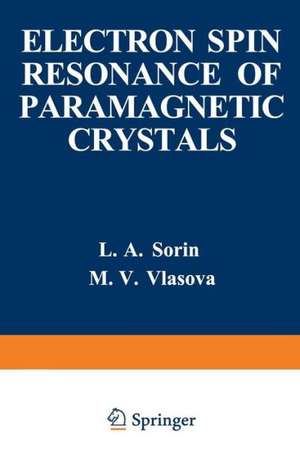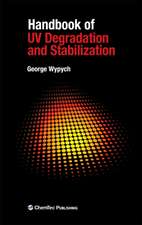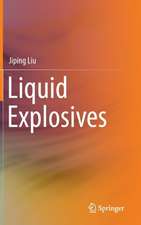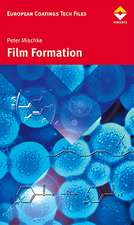Electron Spin Resonance of Paramagnetic Crystals
Autor L. Sorinen Limba Engleză Paperback – 12 dec 2012
Preț: 638.57 lei
Preț vechi: 751.25 lei
-15% Nou
Puncte Express: 958
Preț estimativ în valută:
122.20€ • 127.42$ • 101.56£
122.20€ • 127.42$ • 101.56£
Carte tipărită la comandă
Livrare economică 20 martie-03 aprilie
Preluare comenzi: 021 569.72.76
Specificații
ISBN-13: 9781461586920
ISBN-10: 1461586925
Pagini: 272
Ilustrații: XII, 254 p.
Dimensiuni: 152 x 229 x 14 mm
Greutate: 0.37 kg
Ediția:Softcover reprint of the original 1st ed. 1973
Editura: Springer Us
Colecția Springer
Locul publicării:New York, NY, United States
ISBN-10: 1461586925
Pagini: 272
Ilustrații: XII, 254 p.
Dimensiuni: 152 x 229 x 14 mm
Greutate: 0.37 kg
Ediția:Softcover reprint of the original 1st ed. 1973
Editura: Springer Us
Colecția Springer
Locul publicării:New York, NY, United States
Public țintă
ResearchCuprins
One. Paramagnetic Ions of Transition Elements.- 1. Paramagnetism of incomplete electronic shells.- 2. Level splitting of free paramagnetic ions. The Zeeman effect.- 3. Level splitting of free atoms in an external electric field. The Stark effect.- Two. Levels of Paramagnetic Ions in Crystal Lattices and Magnetic Fields.- 1. Macroscopic description of crystal systems. Symmetry of crystals.- 2. Symmetry point groups.- 3. Representations of groups.- 4. Group-theoretical classification of levels in fields of various symmetries.- 5. Application of the interaction Hamiltonian to the calculation of initial splitting.- 6. Paramagnetic ions in crystal fields. Splitting of energy levels.- 7. Qualitative picture of level splitting in a static magnetic field.- 8. Application of spin Hamiltonians. Angular dependence of EPR spectra.- Three. Electron Paramagnetic Resonance.- 1. Phenomenological treatment of EPR.- 2. Dynamic theory of paramagnetic resonance.- Four. EPR Line Shapes and line Widths.- 1. Dipole-dipole interactions.- 2. Exchange interactions.- 3. Application of the method of moments to analysis of EPR line shapes.- Five. Relaxation Processes in Paramagnetic Crystals.- 1. Spin-lattice relaxation.- 2. Relaxation associated with spin-spin interactions.- 3. Multiple cross-relaxation transitions and harmonic cross-relaxation.- 4. Level population changes due to cross-relaxation processes.- 5. Spin-lattice relaxation of ions of the 4f-and 3d-transition groups.- Six. Paramagnetic Single Crystals as Active Elements in Quantum Paramagnetic Amplifiers (QPA).- 1. Operating principles of QPA.- 2. Requirements from paramagnetic crystals in QPA.- 3. Formation of local symmetry centers in the synthesis of paramagnetic single crystals.













